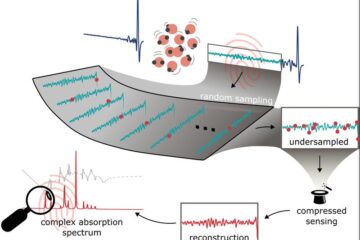Researchers Discover Brain's Memory 'Buffer' in Single Cells

The study, available online and appearing in the February issue of Nature Neuroscience, is the first to identify the specific signal that establishes nonpermanent cellular memory and reveals how the brain holds temporary information.
It has implications for addiction, attention disorders and stress-related memory loss, said Dr. Don Cooper, assistant professor of psychiatry at UT Southwestern and senior author of the study conducted in mice.
Researchers have known that permanent memories are stored when the excitatory amino acid glutamate activates ion channels on nerve cells in the brain to reorganize and strengthen the cells’ connections with one another. But this process takes minutes to hours to turn on and off and is too slow to buffer, or temporarily hold, rapidly incoming information.
The researchers found that rapid-fire inputs less than a second long initiate a cellular memory process in single cells lasting as long as minute, a process called metabotropic glutamate transmission. This transmission in the most highly evolved brain region holds moment-to-moment information.
These cellular findings have implications for how the human brain stores rapidly changing information, like the temporary memory a card shark uses when counting cards in a game of Black Jack and, as casinos have figured out, it is the memory that is most sensitive to the disruptive effects of alcohol and noisy distractions, Dr. Cooper said.
“It’s more like RAM [random access memory] on a computer than memory stored on a disk,” Dr. Cooper said. “The memory on the disk is more permanent and you can go back and access the same information repeatedly. RAM memory is rewritable temporary storage that allows multitasking.”
The researchers identified in mice a specific metabotropic glutamate receptor called mGluR5 that, when turned on, starts a signaling cascade using calcium to hold a memory trace. This fast, short-term memory process happens inside individual cells; with long-term memory, additional proteins cause slow reorganization between cells in a network to establish a permanent memory.
Researchers examined brain cells from mice using nanoscale electrodes to measure the memory formation process.
To further understand how this short-term memory process relates to addiction, researchers applied the neurochemical dopamine to the memory buffer nerve cells. Dopamine is normally needed at an optimal level for an individual to focus attention and engage in fast decision-making memory, but drugs of abuse overload the brain with a surge of dopamine. In the study, researchers found that an experimental drug that activates a specific type of dopamine receptor “focused” the nerve cells, making the memory trace less susceptible to distraction.
When researchers employed an animal model of drug addiction using cocaine, they also found that repeated exposure to addictive levels of cocaine reduced memory trace activation in the memory buffer cells. When researchers then activated dopamine signaling in the “addicted” animals, essentially adding more dopamine to their systems, no focusing effect was observed.
“This makes sense because we know from human and animal models of addiction, when a decision using working memory has to be made, brain imaging shows a deficit in the same area of the brain we looked at,” Dr. Cooper said. “It all fits together.”
Researchers next plan to identify the ion channel responsible for holding and regenerating a memory trace. Their goal is to develop new pharmacological and genetic tools that will allow them to manipulate and possibly expand decision-making memory capacity.
“If we can identify and manipulate the molecular components of memory, we can develop drugs that boost the ability to maintain this memory trace to hopefully allow a person to complete tasks without being distracted,” Dr. Cooper said. “For the person addicted to drugs, we could strengthen this part of the brain involved with decision-making, allowing them to ignore impulses and weigh negative consequences of their behavior before they abuse drugs.”
Other researchers from UT Southwestern involved in the study in Dr. Cooper’s laboratory were Dr. Fang-Min Lu, assistant instructor of psychiatry; Melissa Fowler, a graduate student in psychiatry; Christopher Phillips, a medical student; and Emin Ozkan, student research assistant in physiology. Lead author Kyriaki Sidiropoulou from Rosalind Franklin University of Medicine and Science’s Chicago Medical School and researchers from Ohio State University also participated in the study.
The study was funded by the National Institute on Drug Abuse; National Alliance for Research on Schizophrenia and Depression; the Alexander S. Onassis Public Benefit Foundation; and the Department of Veterans Affairs.
Visit http://www.utsouthwestern.org/neurosciences to learn more about UT Southwestern’s clinical services in neurosciences, including psychiatry.
Dr. Don Cooper — http://www.utsouthwestern.edu/findfac/professional/0,2356,65272,00.html
Media Contact
More Information:
http://www.utsouthwestern.eduAll latest news from the category: Life Sciences and Chemistry
Articles and reports from the Life Sciences and chemistry area deal with applied and basic research into modern biology, chemistry and human medicine.
Valuable information can be found on a range of life sciences fields including bacteriology, biochemistry, bionics, bioinformatics, biophysics, biotechnology, genetics, geobotany, human biology, marine biology, microbiology, molecular biology, cellular biology, zoology, bioinorganic chemistry, microchemistry and environmental chemistry.
Newest articles

A novel universal light-based technique
…to control valley polarization in bulk materials. An international team of researchers reports in Nature a new method that achieves valley polarization in centrosymmetric bulk materials in a non-material-specific way…

How evolution has optimised the magnetic sensor in birds
The magnetic sense of migratory birds is probably based on the protein cryptochrome 4, and a genetic study has now provided further support for this theory. A team of researchers…

Molecular Fingerprint Beyond the Nyquist Frequency
Ultrafast laser spectroscopy allows the ascertainment of dynamics over extremely short time scales, making it a very useful tool in many scientific and industrial applications. A major disadvantage is the…





















